The First International Conference on Hybridized Agriculture
Sojo University, Kumamoto, Japan
Objectives:
This conference aims at a Novel Agriculture hybridized with sciences such as Food Science, Biotechnology, Plasma Electronics, Information Communication Technology (ICT), etc. This conference consists of two sessions. The one is the Research Talk Session and the other is the Enlightenment Session which is opened to the public and implies the emerging agriculture to the next generation farmers. The papers to be presented in the Research Talk Session will be published as a proceedings of this conference in English together with the abstract of the Enlightenment Session presentation. Whereas the papers presented in the Research Talk Session are all the originals, the presentations in the Enlightenment Session are not necessarily the originals in each field in the following, but should be the updated topics inspiring the people in other fields. Both sessions are based on the following five scientific fields.
Traditional Agriculture (TA) in this conference includes vegetable farming, stock farming, fishery industry and forest industry.
Biotechnology (BT), which modifies, manipulates or controls living systems by employing gene manipulation, cell culturing, high energy circumstances, etc., has been applied to traditional agriculture to grow the living things and control the quality in accordance with the design of the farmer. For example, it may lead us to “dream vegetables” which are pest-resistant, drought-tolerant, resistant to cold, of high yield, of full-year culture, etc.
Plasma Electronics (PE) includes the plasma induced by high voltage and the pulse power generated by a high energy laser. These kinds of high energy circumstances exert influence on the living things such as livestock, vegetables, bacteria and viruses. Thus PE leads us to expect potential applications to growth-promotion, keeping fresh, disinfection or ablation in response to the electric power density.
Information Communication Technology (ICT) is essential for fusing multimodal sensor data, e.g. ambient temperature and humidity, pH level or chemical concentration in water or soil, solar irradiation, wind-force, etc. It is also essential to store the data in the computer networks and retrieve the necessary information from the networks to achieve the learning and the decision making of human experts or artificial intelligence.
Food Science (FS) includes functional food, food processing, optimal transportation, storage environment, and food education (Shokuiku in Japanese), to improve freshness and palatability of the foods, and guarantee the safety, health and longevity of the consumers.
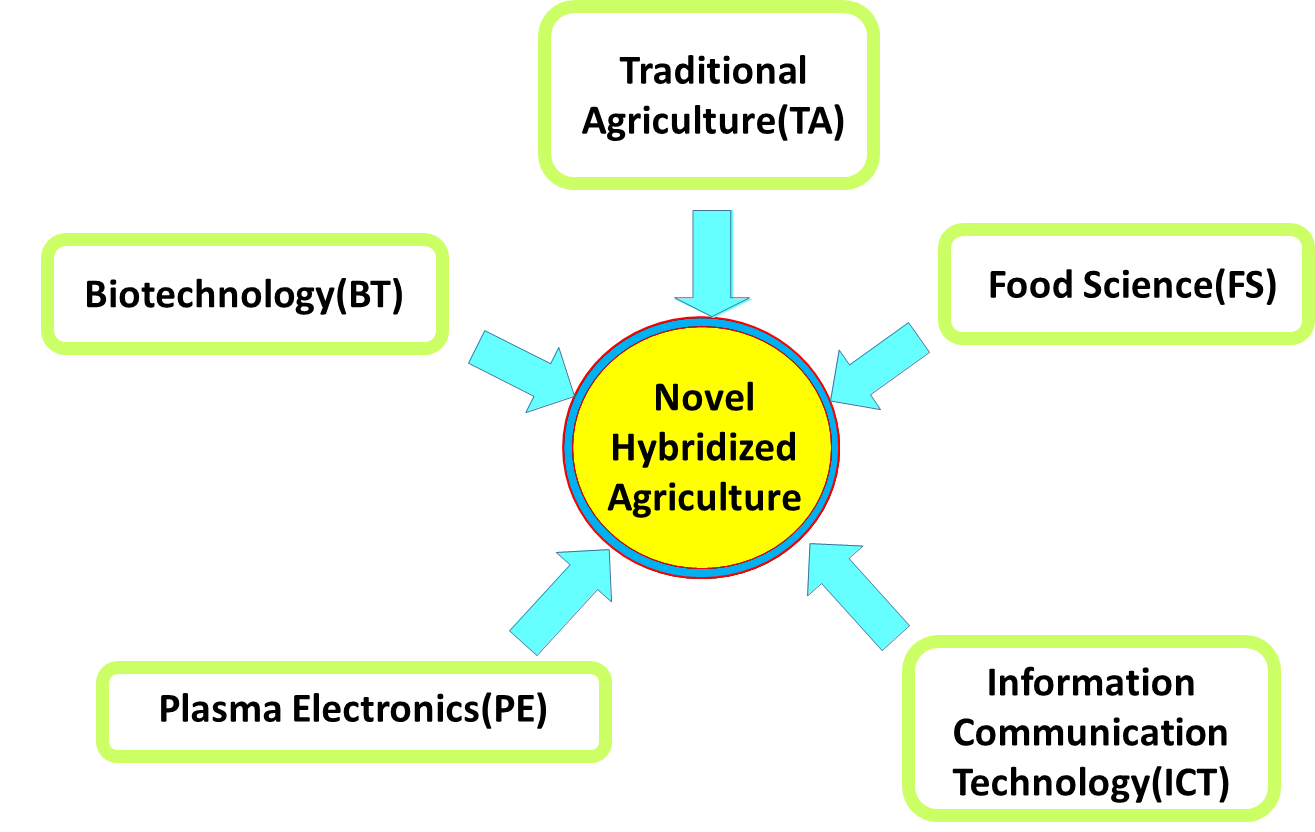
Keynote1
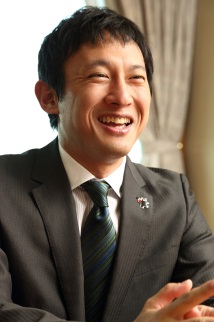

KEYWORDS:
advanced agricultural policies, new agri-business, silkworm, aseptic room, caterpillar fungus.
POTENTIAL FUSION WITH OR APPLICATION TO:
Traditional Agriculture (TA), Biotechnology (BT), Food Science (FS).
Kabashima, Governor of Kumamoto Prefecture, who aims to let Kumamoto’s agri-business profitable, leads in advanced agricultural policies of Japanese local government. In Kumamoto there are some farmers who manage quite new agri-business by adopting advanced technologies. For example, an agricultural corporation can raise silkworms all the year round in an aseptic room which is used for manufacturing semiconductors. Aseptic environment enables to raise steady amounts of silkworms and to keep those quality high. In addition, they succeed in commoditize caterpillar fungus in a factory, which parasitize insects. Another agricultural corporation are trying to develop high-functioning silk tread. These adoptions of advanced technologies would increase possibility to restore sericultural industry in Kumamoto, where once it was one of the important agricultural business. This lecture will introduce new trends which bring Kumamoto’s agriculture innovations
Keynote2


(Lublin University of Technology)
KEY WORDS:
plasma, non-thermal plasma, ozone, AOTs, soil treatment, food decontamination, microbial infections, disinfection, surface decontamination, pathogen reduction, plasma sterilisation
Agricultural and food safety is a crucial factor for the prosperity and future of every country and region. At present, many food production factories struggle with persistent microbial infections caused by bacteria, viruses or fungi in biofilm and planctonic forms deposited on various inert and living surfaces. There is an urgent need for developing a time- and cost-effective decontamination tool which could be safely and flexibly applied to various surfaces and materials. A number of technologies were tested as having potential for pathogen reduction in food industry, for instance: rinsing with hot water, organic acids, alcohol, trisodium phosphate, hydrogen peroxide, ozonated water, chlorine compounds or surfactants, steam vacuuming, superheated steam, high pressure, sonoluminescence, UV radiation and low-dose irradiation.
The idea of plasma treatment was proposed more than 50 years ago as a good, low toxicity method. Plasma can inactivate most pathogens: gram negative and positive bacteria, microbial spores, molds and fungi, viruses and maybe even prions. Although the number of research papers and devices related to this topic is constantly increasing, the majority of the solutions were not fully implemented, mostly because of the lack of system optimisation, lack of comparability between the proposed reactors and methods, lack of matching between plasma properties and the contaminated material treated, or incomplete sterilisation in the case of multi-microorganism biofilms. Therefore, industrial plasma-based decontamination is still a great challenge.
Many research groups concentrate on the efforts to design a plasma treatment device working in the ambient conditions, using a variety of methods such as barrier discharge, pulsed corona reactors, gliding arc or plasma jets. To maintain a uniform discharge under atmospheric pressure relatively expensive gases such as helium or argon in high concentrations are mainly used. Plasma disinfection time given in the literature varies from several minutes to even hours. The treatment can be considered as a surface one. The antimicrobial properties of plasmas and Advanced Oxidation Technologies AOT (ozone, hydrogen peroxide, electric field, UV radiation, etc.) in the case of decontamination of surfaces and for treatment of various plant seeds and bulbs were widely proven, but no extensive study has been done to determine the most beneficial treatment path and conditions for the food, plants and soil.
Numerous approaches were tested but no-one has yet proposed a synergetic, integrated and adaptable system which could utilise all the benefits of direct low-temperature plasma treatment combined with AOT techniques.
The lecture will provide a review of non-thermal plasma treatment techniques for application in agriculture and food industry. Special attention will be paid to recent initiatives and EU programmes undertaken within the field of plasma agriculture. The results of the research carried out in this area at the Lublin University of Technology in cooperation with the Kumamoto and Sojo Universities will also be presented.
Keynote3
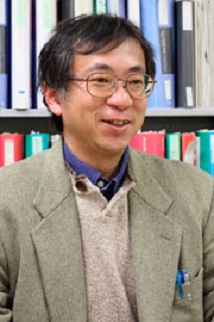

KEY WORDS:
Growth promotion, mushroom, sterilization, plasma, pulsed power, artificial lightning, keeping freshness, hydroponics cultivation, electrical stimulation.
POTENTIAL FUSION WITH OR APPLICATION TO:
Traditional Agriculture (TA), Biotechnology (BT), Plasma Electronics (PE), Fishery, Food Science (FS).
Plasma and pulsed power technologies were utilized for agriculture, fishery and food processing applications. Repetitively operated compact pulsed power generators with a moderate peak power were developed for the applications in several stages of agriculture and fishery. Types of pulsed power that have biological effects are caused with gas discharges, water discharges, and intense high-electric fields. The pulsed repetitive discharge were used for promoting growth of the vegetables and fruits. The growth rate of the vegetables and sugar content in the strawberry harvested after the cultivation increased by the plasma irradiation to the hydroponic solution. The yielding rate of Shiitake mushroom (Lentinula edodes) was also improved with the high-voltage stimulation in fruit-body formation phase. When the high-voltage was applied to the cultivated bed of the mushroom, the surface potential of the bed changes from zero to the high-voltage. This potential change causes high electric field in the bed. The hypha of the L. edodes were accelerated owing to the strong electrical field. The high-voltage and the non-thermal plasma contributed to improve for keeping freshness for a relatively longer period of perishables such as fish and shellfish. These applications can contribute a sustainable food supply chain in the world.
Keynote4
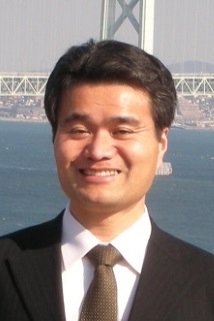

(National Institute of Advanced Industrial Science and Technology)
KEY WORDS:
microbubble, nanobubble, gas-water interface, hydrogen bonding network, zeta-potential, aqueous ions, collapsing, free-radicals, Brownian movement, dynamic light scatting, atomic force microscope, disinfection, activation.
POTENTIAL FUSION WITH OR APPLICATION TO:
Traditional agriculture(TA), Biotechnology(BT), Food Science(FS).
We are very familiar with bubbles, the shining bubbles in beer stimulate the mind of drinkers and air bubbles in aquariums support the life of many fishes. And now we are realizing fantastic properties that tiny bubbles have. Microbubbles are less than 50 micro-meters in diameter, and they collapse underwater. During the collapsing process the aqueous ions on and around the tiny bubble are accumulating to the shrinking gas-water interface. And it has been demonstrated that the behavior of the collapsing microbubble leads to some interesting phenomena; free-radical generation at the extinction of the collapsing microbubbles and the generation of tentatively stabilized nanobubbles. The former property enables us to use the tiny bubbles for some technical purposes, such as waste water treatment and semiconductor cleaning. Ant the nanobubbles can be used for a wide variety of technical usages, such as agriculture and food industries. The presenter will introduce the fundamental properties of these tiny bubbles and the upcoming technologies relating the fantastic tiny bubbles.
Keynote5
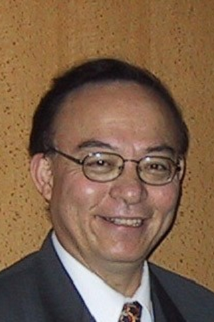

(Catholic University of America, Washington D.C.)
KEY WORDS:
Artificial Neural Networks, Unsupervised learning, Big Data Analysis.
POTENTIAL FUSION WITH OR APPLICATION TO:
Big Data Analysis of Traditional Agriculture (TA), Biotechnology (BT), Plasma Electronics (PE), Information Communication Technology (ICT), Food Science (FS).
Internet Giants: Google Machine-AlphaGo, Youtube; Facebook, Microsoft all have powerful tools in handling their own Big Data Analyses (BDA). They are all based on supervised Least Mean Square (LMS) Error of assigning input homogeneous exemplars to a set of output numbers of categories, and then let the supercomputer crank days through the I/O, using ANN “Backprop” algorithm known as Deep Learning. We shall apply such a powerful machine learning to add value to Hybridize Agriculture. How to do? Since each have own cost functions and databases, then to fuse them with added value we must use the supply-demand value-added chain concept to perform multiple stages optimization using the traditional “Dynamic Programming." However, Unsupervised Deep Learning Backprop algorithm will be faster without the need to prescribe performance metric of each hybridization components ahead of the time. We shall compare and replace the standard supervised multiple stages optimization using the traditional "Dynamic Programming" with multiple layers "Deep Learning" with our new "Unsupervised Backprop" for data discovery mining.
As a byproduct, we discovered the glial cells as an indispensable members of Hebb learning partner, because each node is a glial cell. When the glial force is in balance, we discovered the sigmoid logic.
Keynote6
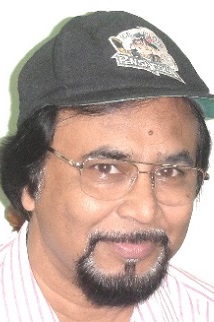

KEY WORDS:
fuzzy sets, neural networks, sustainable agriculture, computational intelligence, hybridization of technologies.
POTENTIAL FUSION WITH OR APPLICATION TO:
Traditional Agriculture, Biotechnology, Plasma Electronics, and Information Technology via Computational Intelligence.
In today's world, agricultural system, in its broadest sense, should be a sustainable system to get the maximum yield with minimum resources (human/effort/cost ? not necessarily monetary) for satisfying the needs of the maximum community. For this farmers’ need to know what to grow/cultivate; when to grow; what is the optimal distribution among different crops (farmer level / regional level); when to cut; how to store; what and how much pesticide to use; when and where to sell. All these questions have an associated adjective “optimal”- and the answer just does not depend only on farmers’ interest. To address all these issues, we need inputs from satellite image analysis; weather prediction; data mining, machine learning, biotechnology, plasma electronics; information technology and so on. Computational Intelligence (CI), which is a collection of biologically and linguistically inspired computing tools, can not only help to develop the required technologies in each of the above mentioned areas, it also can serve as a great tool for hybridization of these areas to achieve sustainable agricultural systems. In this talk, using layperson’s language, I shall introduce to computational intelligence and explain how CI can help to realize the objective of hybridized agriculture. I shall emphasize on what CI can provide in the context of our problem, that other computing tools cannot.
Keynote7


Fuzzy Logic Systems Institute)
KEY WORDS:
organic agriculture, rice-duck farming (Aigamo farming), circulation and sustainability, safety, community supported agriculture (CSA), harmony between nature and human beings, partner consumer, cozy agriculture
POTENTIAL FUSION WITH OR APPLICATION TO:
Traditional Agriculture (TA), Plasma Electronics (PE), Information Communication Technology (ICT), Food Science (FS).
There is absolutely nothing meaningless in the natural world. All beings play their own roles to the death in the ecological system on the globe. Weeds and bugs behave in the same way. Often, we can simply say that it is a weed or a bug. Is it universally correct? To be sure, we hate weeds and bugs in rice paddies of monocropping. However when aigamo (Anas platyrhynchos var.domesticus), which is a cross between a wild and a domesticated duck and lost a flying ability, is released to the rice paddy, the complex above easily becomes unreasonable. Weeds and bugs morph into indispensable food for aigamo, and aigamo leaves its excrement which is a plant food for rice and also provides meat for human beings.
The groundbreaking point of the rice-aigamo farming is that weeds and bugs demonized during the rice history of 2,000 years have been changed to the natural blessings by the “Principle of concurrent cropping”. The author accomplished the rice-aigamo farming and the organic farming after trial and error for 39 years.
This Keynote Speech presents the scheme of the concurrent cropping of flooded rice and aigamo, as well as an interesting world of the organic farming.
Keynote8
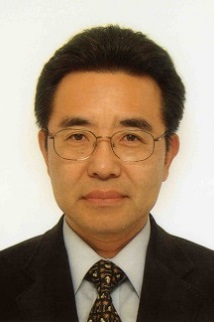

KEY WORDS:
bioeconomy, biotechonology, bioethanol, Agriculture 2.0, Agricultural literacy.
POTENTIAL FUSION WITH OR APPLICATION TO:
Biotechnology (BT)
In the 20th century we had used much fossil energy to construct convenient and comfortable daily life based on mass production and consumption, which produced serious pressing issues, at the same time, including global warming as well as completion of fossil energy. Bioethanol is regarded as an alternative to fossil fuels and as a potential countermeasure against global warming. There is concern, however, that the rapid increase in global bioethanol production may lead to possible competition with food production. Thus, cellulosic bioethanol produced from non-edible plants is receiving increasing attention. The author succeeded to grow raw material plants for cellulosic bioethanol in low-input sustainable manner. Production of renewable energy from biomass is a typical example of biotechnology which is expected as a basis for bioeconomy. Agricultural sciences, under such circumstances, have been developing rapidly to be called as Agriculture 2.0 to construct sustainable society with well-being. Agriculture 1.0 which is specialized for stable food production has still been the core of Agriculture 2.0. Agricultural literacy should be immediately organized for next generation who can look over many complicated issues to be solved.
Call for Papers
The conference includes two kinds of presentations, (1)Ordinary Talks and (2)Posters and Demonstrations.
The speakers are requested to send the 1-page Abstract (attached Template), indicating the category of presentation, to the following Conference Chair. The Abstract will be reviewed by the Program Committee, and the notification will be sent to the author within two weeks after receiving the Abstract.
Authors can submit their papers electronically via our submission page as follows, or via the email hybrid2016@cis.sojo-u.ac.jp.
Web site for abstract submission
The size of poster board is 1m ×2m.
Submissions
The speakers can also submit papers for the conference proceedings. The submitted paper should be no longer than 6 pages in the standard format. The 6 page limit includes title, abstract, acknowledgements, references, illustrations and any other parts of the paper; appendixes bypassing the page limit are not allowed.
Electronical submission:
Schedule
■Ordhinary Talks■Presentation:15min,Discussion:5min
Invited Speakers
| Name | Title | Affiliation | Key words |
|---|---|---|---|
| Taisuke Ono | New Trends in Advanced Agriculture of Kumamoto Prefecture ― Toward the Disaster Restoration ― |
Kumamoto Prefecture Government | advanced agricultural policies, new agri-business, silkworm, aseptic room, caterpillar fungus |
| Henryka Danuta STRYCZEWSKA | Plasma agriculture in Europe ― Review of research on agricultural applications of non-thermal plasma ― |
Institute of Electrical Engineering and Electrotechnology, Faculty of Electrical Engineering and Computer Science, Lublin University of Technology, Poland | plasma, non-thermal plasma, ozone, AOTs, soil treatment, food decontamination, microbial infections, disinfection, surface decontamination, pathogen reduction, plasma sterilisation |
| Koichi Takaki | Lightning to Agriculture ― Improvement of Plant Growth, Product Freshness and Extraction of Functional Agent by Pulsed Power and Plasmas ― |
Iwate University | Growth promotion, mushroom, sterilization, plasma, pulsed power, artificial lightning, keeping freshness, hydroponics cultivation, electrical stimulation |
| Masayoshi Takahashi | Fantastic World of Tiny Bubbles ― Fundamental Properties and Technical Applications of Micro and Nano-bubbles ― |
National Institute of Advanced Industrial Science and Technology (AIST) | Traditional agriculture, Biotechnology, Food Science microbubble, nanobubble, gas-water interface, hydrogen bonding network, zeta-potential, aqueous ions, collapsing, free-radicals, Brownian movement, dynamic light scatting, atomic force microscope, disinfection, activation |
| Harold Szu | Big Data Analysis of Hybridization of Agricultures by Unsupervised Deep Learning | Catholic University of America, Washington D.C. | Artificial Neural Networks, Unsupervised learning, Big Data Analysis |
| Nikhil R. Pal | Computational Intelligence for Hybridized Agriculture | Indian Statistical Institute | fuzzy sets, neural networks, sustainable agriculture, computational intelligence, hybridization of technologies |
| Takao Furuno | The Present Situation and Problems of My Organic Agricultur ― Technologies to Add a Little Spice to Agriculture and My Life ― |
Furuno’s Farm for Aigamo Farming, Fuzzy Logic Systems Institute |
organic agriculture, rice-duck farming (Aigamo farming), circulation and sustainability, safety, community supported agriculture (CSA), harmony between nature and human beings, partner consumer, cozy agriculture |
| Shigenori Morita | Agriculture 2.0 and Agricultural Literacy ― Perspectives to sustainable society and its well-being ― |
Tokyo University of Agriculture | bioeconomy, biotechonology, bioethanol, Agriculture 2.0, Agricultural literacy |
Accepted Papers
To be Announced after Sept. 30
Registration
The deadline of papers (6 pages or less) for the Ordinary Talks is November 11. The template of the paper of the Research Talk Sessions can be downloaded from the conference home page.Important Dates
| date | |
|---|---|
| Abstract Submission | 17 September 2016. |
| Acceptance of presentation | 26 September 2016. |
| Early Registration Deadline | 14 October 2016. |
| Conference | 21-24 October 2016. |
| Paper submission | 11 November 2016. |
Committee
【General Chair】 Mineo Nakayama(Sojo University)
【Conference Chair】 Takeshi Yamakawa(Sojo University)
【Steering Committee】
Hiroyuki Nishi(Sojo University)
Hidenori Akiyama(Kumamoto University)
Kenji Ebihara(Environment and Energy Laboratory)
Tomohiro Araki(Tokai University)
Tatsurou Murata(Tokai University)
【Program Committee】
Chair:Fumiaki Mitsugi(Kumamoto University)
Members:
≪Food Science≫
Yuji Teramoto(Sojo University),Noriaki Saigusa(Sojo University)
≪Information Communication Technology≫
Masatoshi Nakahara(Sojo University)
≪Plasma Electronics≫
Fumiaki Mitsugi(Kumamoto University),
Hiroharu Kawasaki(SASEBO National College of Technology)
≪Traditional Agriculture≫
Kouhei Murata(Tokai University)
≪Biotechnology≫
Hitoshi Miyasaka(Sojo University),Shuhei Hayashi(Sojo University)
【Organizing Committee】
Chair:Shin-ichi Aoqui(Sojo University)
Members:Ahrary Alireza(Sojo University),Noriko Horibe(Sojo University),
Akira Saitoh(Sojo University),Yasumune Nakayama(Sojo University),
Tatsurou Murata(Tokai University),Sunao Katsuki(Kumamoto University),
Kouichi Hirata(Kyushu Institute of Technology),
Shinichi Shimozono(Kyushu Institute of Technology)
【Conference Secretariat】 Ahrary Alireza(Sojo University)
【Financial Chair】 Shuhei (Sojo University)
【Webmaster】 Aki Higashi(Sojo University)
Venue
4-22-1 Ikeda Kumamoto City, Japan
SOJO UNIVERSITY
Sponsors
Sponsored by:
Sojo University
Endorsed by:
Kumamoto University
Tokai University
Kumamoto Prefecture
Association of Aso area world agriculture inheritance promotion
The Institute of Electrical and Electronics Engineers (IEEE), Fukuoka Section
The Institute of Electrical Engineers of Japan (IEEJ), Kyushu Branch
The Japan Society of Plasma Science and Nuclear Fusion Research, Kyushu Branch
Financially Supported by:
Fuji Xerox Kumamoto Co., Ltd.
Nakamura Sangyo Kaihatsu Co., Ltd
Matsumoto Institute of Microorganisms Co., Ltd.
Grant
Kumamoto International Convention and Tourism Bureau
Contact
For queries please contact the Conference secretary via the email hybrid2016@cis.sojo-u.ac.jp.
Page Top
